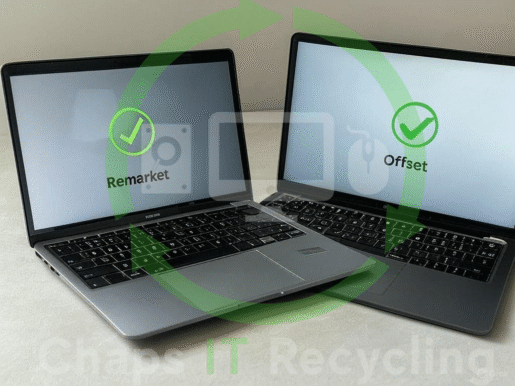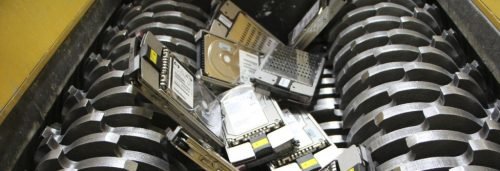Maximise ROI From Redundant IT – Chaps IT – Industry Leading Rebates
Automated IT Asset Disposal

Automated IT Asset Disposal

Looking for a compliant, minimal effort & automated exit strategy for your redundant IT Assets?
Do you spend countless hours making inventory lists and removing hard drives? Perhaps its time for a change.
Where does an IT manager turn when they need a partner they can trust—one who’ll handle sensitive data responsibly, ensure full compliance, and still deliver top rebates on tech?
Thats where we come in.

Looking for a compliant, minimal effort & automated exit strategy for your redundant IT Assets?
Do you spend countless hours making inventory lists and removing hard drives? Perhaps its time for a change.
Where does an IT manager turn when they need a partner they can trust—one who’ll handle sensitive data responsibly, ensure full compliance, and still deliver top rebates on tech?
Thats where we come in.

Compliant
With Each Collection
Compliant
With Each Collection

Tech Moves Quickly Stop Wasting Time
❌ Holding back IT assets “just incase” – Release Value Now
❌ Removing hard drives & hitting them with a hammer
❌ Using free software wiping solutions which do not generate GDPR compliant documentation or “formatting” data media
❌ Creating extensive IT kit lists for disposal
❌ Wasting valuable resources managing redundant IT Assets
❌ Allow employees to inherit IT assets without the correct GDPR compliant exit documentation.
❌ Increasing the risk of a Data breach & large fine (£1B+ in 2025) Damaging your companies reputation.
Tech Moves Quickly Stop Wasting Time
❌ Holding back IT assets “just incase” – Release Value Now
❌ Removing hard drives & hitting them with a hammer
❌ Using free software wiping solutions which do not generate GDPR compliant documentation or “formatting” data media
❌ Creating extensive IT kit lists for disposal
❌ Wasting valuable resources managing redundant IT Assets
❌ Allow employees to inherit IT assets without the correct GDPR compliant exit documentation.
❌ Increasing the risk of a Data breach & large fine (£1B+ in 2025) Damaging your companies reputation.
ISO 27001
ISO 14001
Complete Audit Trail
DBS Checked & Tracked
Facility Shredding
Im Dom Chappell founder of Chaps IT Recycling Limited and we’re here to help out.
Over the passed 5 Years we’ve helped 100s of organisations automate their IT Asset Disposal.
Because lets be honest – this isnt where you want your team to be spending time.
But compliance, security and ROI still Matter
Im Dom Chappell founder of Chaps IT Recycling Limited and we’re here to help out.
Over the passed 5 Years we’ve helped 100s of organisations automate their IT Asset Disposal.
Because lets be honest – this isnt where you want your team to be spending time.
But compliance, security and ROI still Matter
93% Of IT Assets
Recycled Free of Charge
AUTOMATE TODAY
RAMS/Full Risk assessments prior to collection

Effortlessly & Automatically Exit Your IT Assets
Endless Kit Lists, rebates which never arrive, countless hours
wasted managing redudnant IT Assets, unnecessary depreciation.
Our solution resolves these issues.
✅ Customer Portal To Book Collections & reports dashboard
✅ Up To 40% Of the fair market value for IT Assets
✅ Enhanced Reporting Listing Each Asset including serial numbers
✅ Pre-defined rebate criteria with pricing per asset category
✅ Fully GDPR & DPA Data Destruction certificate with each collection.
✅ 4 Levels of data destruction – To meet internal policies.

Effortlessly & Automatically Exit Your IT Assets
Endless Kit Lists, rebates which never arrive, countless hours
wasted managing redudnant IT Assets, unnecessary depreciation.
Our solution resolves these issues.
✅ Customer Portal To Book Collections & reports dashboard
✅ Up To 40% Of the fair market value for IT Assets
✅ Enhanced Reporting Listing Each Asset including serial numbers
✅ Pre-defined rebate criteria with pricing per asset category
✅ Fully GDPR & DPA Data Destruction certificate with each collection.
✅ 4 Levels of data destruction – To meet internal policies.
Contact Us Today Let us explain how we can increase your ROI through redundant IT Assets
Contact Us Today Let us explain how we can increase your ROI through redundant IT Assets
Live Chat
Monday-Friday
8:30am – 5:00 PM
Teams Call
Speak With An Expert
Call Us
Speak With An Expert
0345 066 0101 – Opt 1
Have a List/Photos?
Let Us Estimate Your Rebate
Complete The Form Below
Live Chat Chat Now!
Monday-Friday
8:30am – 5:00 PM
Teams Call
Book Now
Call Us Today
Speak With An Expert
Have a List/Photos?
Let Us Estimate Your Rebate
Complete The Form Below







































